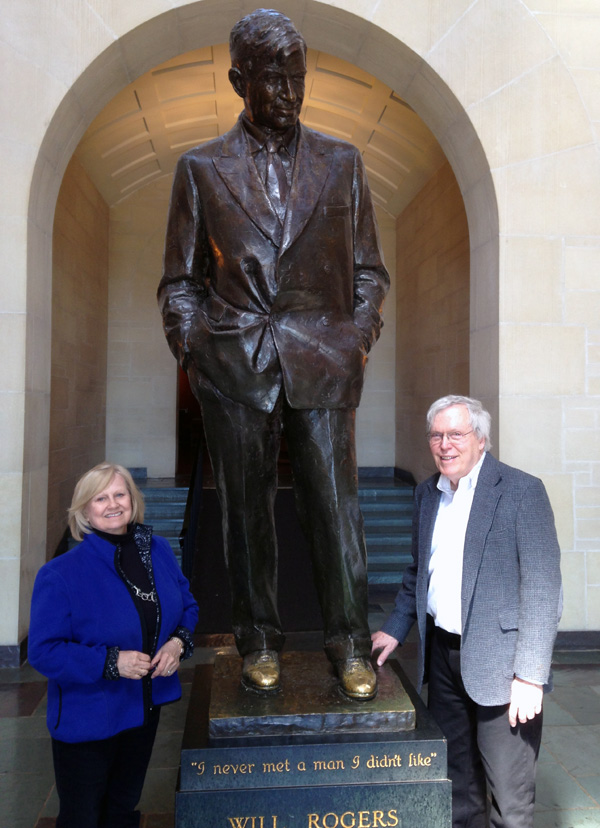
"What's New" Archives: May 2016
May 24, 2016:
Walt Kelly's FBI File, Continued
May 20, 2016:
May 24, 2016:
Walt Kelly's FBI File, Continued
Back on February 25, I wrote about the difficulties I'd encountered in trying to pry Walt Kelly's FBI file out of the clutches of either the FBI or the National Archives, whoever might have it. I wrote again to the FBI a few weeks ago, summarizing the frustrations I'd encountered in trying to locate that file, and last week I got what is probably the final word. David M. Hardy of the bureau's records management division told me:
Based on the information you provided, we conducted an additional search of the indices to our Central Records System. We were unable to identify main or cross-reference file records responsive to the [Freedom of Information Act].
So much for that. If there ever was an FBI file on Kelly—and I'm sure there was—it no longer exists, or it is so completely lost that it might as well be nonexistent. As to what was in that file, there's a summary on page 120 of the 1992 book Pogo Files for Pogophiles, by Selby Daley Kelly (Walt's widow) and Steve Thompson. No startling revelations there, really no revelations of any kind, but it remains frustrating that the primary material is out of reach, probably permanently.
From Garry Apgar:
“Ode to a Lost Cause”
The Lord of the Files,
... FBI files, that is ...
Says Pogo’s a no-go.
Good golly, gee whiz.Could it be, somehow,
They’ve been hoovered?
Or has Mr. Barrier
Been outmaneuvered?’Tis cause for lament,
... or paranoia.
Either way, I say:
So much for FOIA.[Posted May 26, 2016]
May 20, 2016:
Will Power
Phyllis and I have been pinned down for the last six months, at first by daily visits to her 91-year-old father, hospitalized with a broken hip, and then, once he was settled in the comfortable retirement home where my own parents ended their lives, by all the duties attendant on selling his home and otherwise wrapping up most of his affairs. Everything has taken much more time and been much more difficult than we hoped, and this website has been one of the casualties. We have taken only a few short breaks—never more than a day's drive away from home—one of which was a two-day swing for Phyllis's birthday to a couple of Frank Lloyd Wright buildings in northwest Arkansas and northeast Oklahoma. (Wright's only completed skyscraper, in the oil town of Bartlesville, Oklahoma, is now in part a hotel, the Inn at Price Tower, where we spent the night.) On the way home we spent a couple of hours at the Will Rogers Memorial in Claremore, Oklahoma, a place I'd always wanted to visit but had never seeen. It's well worth a detour if you're passing through Oklahoma on I-40.
The very helpful docents confirmed what I suspected: as celebrated as he once was, Will Rogers is no longer even a name to many of the Memorial's American visitors. The foreign visitors tend to be more Rogers-aware, the docents said, but it may be that a European or Asian tourist who makes his or her way to Claremore is just more likely to be there specifically to visit the Memorial; I'd guess that many American visitors wander in on their way to someplace else.
And. truth to tell, I'm not surprised that Rogers's celebrity has faded. Much of his humor, whether heard on old radio broadcasts or read on the page, has held up no better than most topical humor, and some of his most celebrated sayings, robbed of context, can seem downright simpleminded. (His most famous saying, and I would say the most embarrassing, is the one carved on the base of the statue in the photo above.) Rogers was a very popular movie star in the first half of the 1930s, and John Ford, who directed him in three features, spoke of him warmly, but he was no actor, and his movies, at least the ones I've seen, are not much good. His early success in vaudeville as a fantastically skillful trick roper, documented in silent movies, is even more remote. So, Will Rogers is likely to be known today, more than eighty years after his death, less for his own accomplishments than as someone whose fame was once so great that his home state placed his statue in the U.S. Capitol's National Statuary Hall Collection.
 If Disney fans are aware of Rogers, it may be mostly because he played polo with Walt and other people from the studio. (He was to have been caricatured as one of the players in Mickey's Polo Team, but he was replaced by Charlie Chaplin after his death in a 1935 plane crash in Alaska.) Despite Rogers's prominence as a polo player, there is no polo memorabilia on display at the Memorial, and nothing to link Walt Disney and Will Rogers. A docent me told that the Memorial does own one very ordinary polo-playing outfit, but that preserving it would be outrageously expensive, who knows why.
If Disney fans are aware of Rogers, it may be mostly because he played polo with Walt and other people from the studio. (He was to have been caricatured as one of the players in Mickey's Polo Team, but he was replaced by Charlie Chaplin after his death in a 1935 plane crash in Alaska.) Despite Rogers's prominence as a polo player, there is no polo memorabilia on display at the Memorial, and nothing to link Walt Disney and Will Rogers. A docent me told that the Memorial does own one very ordinary polo-playing outfit, but that preserving it would be outrageously expensive, who knows why.
One of the Disney polo players—Roy Disney, I think, although I can't lay my hands on that quotation—spoke of Rogers coolly, as a rough and unpleasant competitor, but after visiting the Memorial I could understand why he might seem that way. The entrance hall at the Rogers Memorial is devoted to displays of mounted saddles, and a docent told me that after Rogers left Oklahma for New York and Los Angeles, he took a horse with him wherever he went. He was a man who was completely at home on a horse, and he surely regarded many of his fellow polo players as dilettantes.
And if you're wondering what a Frank Lloyd Wright skyscraper might look like, that's the Price Tower at the right.
From Christian Svenningsen: Actually, there is more to the story of Disney and Rogers. In fact, at one time, Walt was negotiating with Rogers to appear in one of the possibilities for Disney's first full-length feature film. He considered using Will Rogers as Rip Van Winkle interacting with animated characters. Walt sent some of his top Disney animators including Grim Natwick, Art Babbitt, and Bill Tytla to Rogers' Santa Monica ranch to sketch the popular comedian in action, but Rogers's untimely death put an end to the project.
MB replies: J.B. Kaufman mentions that visit to the Rogers ranch in the article titled "Before Snow White," published in 1992 in Film History (p. 161). The visit to the ranch had to do not with a possible Rip Van Winkle feature, as Kaufman suggests might have been the case, but with Mickey's Polo Team. Bill Tytla, in an April 29, 1935, letter to his family in New York (a copy is in the Canemaker Collection at NYU), wrote of visiting the Rogers ranch: "We're making a polo picture and I was to do some work in it—I'm not because I've got a lot of stuff in another picture. So Arthur [Babbitt] and a few of the boys besides myself were invited to Will Rogers' ranch a week ago Sunday [April 21, 1935]—and I was introduced to Spencer Tracy & Will Rogers... The purpose of this visit was to watch a little polo match on Rogers' private polo field—it was just as if some of the boys got together to play some golf on Sunday morning. ... Walt told me to ride one of his horses—which was like handing a kid an ice cream cone. Then he hinted at coming over to his club and trying a little scrimmage the follow[ing] Saturday—and sure enough he meant it. So that's what we did last Saturday." There's no mention of a Rip Van Winkle feature in Tytla's letter
[Posted June 2, 2016]
